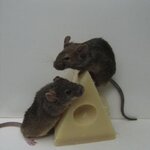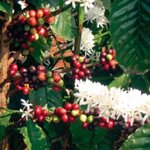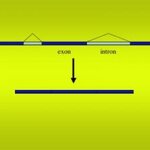Genetics & Molecular Biology

For cells that hold so much promise, stem cells' potential has so far gone largely untapped. But new research from Rockefeller University and Howard Hughes Medical Institute scientists now shows that adult stem cells taken from skin can be used to clone mice using a procedure called nuclear transfer. The findings are reported in the Feb. 12 online edition of the Proceedings of the National Academy of Sciences.
Using a technique called nuclear transfer, mice were cloned using adult skin stem cells (right) and a more differentiated type of skin cell (left). The mouse on the right is almost…

Mice engineered to have cleft palates can be rescued in utero by injecting the mothers with a small molecule to correct the defect, say scientists at the Stanford University School of Medicine and Lucile Packard Children's Hospital. In addition to shedding light on the biology of cleft palate, the research raises hopes that it may one day be possible to prevent many types of human birth defects by using a similar vaccination-type technique in pregnant women likely to have affected fetuses.
"This is a really important baby step that opens the door to the development of fetal therapies," said…

Sucrose plays a vital role in coffee organoleptic quality. A team from CIRAD and the Agricultural Institute of Paraná in Brazil has recently identified the genes responsible for sucrose accumulation in coffee beans. This is a new step along the way to producing exceptional coffees.
The sucrose accumulated in the beans is one of the organoleptic compounds in coffee. (Photo Credit: Pierre Marraccini, CIRAD)
To maintain their incomes, growers are increasingly banking on producing quality coffee. However, improving coffee beverage quality means knowing more about the biological processes -…

The first draft of the horse genome sequence has been deposited in public databases and is freely available for use by biomedical and veterinary researchers around the globe, leaders of the international Horse Genome Sequencing Project announced today.
Photo of Twilight the horse. NHGRI-supported researchers have sequenced the genome of this Thoroughbred mare from Cornell University in Ithaca, N.Y. (Courtesy of Doug Antzak, Baker Institute for Animal Health, College of Veterinary Medicine, Cornell University)
The $15 million effort to sequence the approximately 2.7 billion DNA base pairs in…

Many human proteins are not as good as they might be because the gene sequences that code for them have a double role which slows down the rate at which they evolve, according to new research published in PLoS Biology.
By tweaking these dual role regions, scientists could develop gene therapy techniques that produce proteins that are even better than those found in nature, and could one day be used to help people recover from genetic disorders.
The stretch of DNA which codes for a specific protein is often interrupted by sections of apparently useless DNA – known as introns – which need to be…

If you bend a knee or an elbow, the nerves in your limbs stretch but do not break. A University of Utah study suggests why: A gene produces a springy protein that keeps nerve cells flexible. When the gene was disabled in tiny nematode worms, their nerve cells literally broke.
Nerve cells glow fluorescent green in these microscope photographs showing part of a cross section of a tiny nematode worm. The horizontal green linear feature near the bottom of each photo is the worm equivalent of the spinal cord, while a secondary nerve cord is the horizontal green line near the top. The vertical…

The emerging picture of microbes as gene-swapping collectives demands a revision of such concepts as organism, species and evolution itself.
One of the most fundamental patterns of scientific discovery is the revolution in thought that accompanies a new body of data. Satellite-based astronomy has, during the past decade, overthrown our most cherished ideas of cosmology, especially those relating to the size, dynamics and composition of the Universe.
Similarly, the convergence of fresh theoretical ideas in evolution and the coming avalanche of genomic data will profoundly alter our…

Homer's Cyclops might be myth, but a disorder that can cause babies to be born with only one eye is very real. Scientists from Cleveland, Ohio, and Paris, France, reached an important milestone in understanding one of the molecular causes of a rare, but serious birth defect, Holoprosencephaly.
In a study to appear in the February issue of The FASEB Journal, researchers describe findings that help explain why and how some fetal brains fail to develop two lobes, as well as why and how the related skull and facial defects occur. Using the information from this study, researchers will be able to…

What makes dancers different than the rest of us? Genetic variants, says a researcher at the Hebrew University of Jerusalem.
In a study published in PLoS Genetics, Prof. Richard P. Ebstein of the Department of Psychology and his research associates have shown, through DNA examination, that dancers show consistent differences in two key genes from the general population. Ebstein is the head of the Scheinfeld Center for Human Genetics in the Social Sciences in the Department of Psychology.
This finding is not surprising, says Ebstein, in view of other studies of musicians and athletes, which…